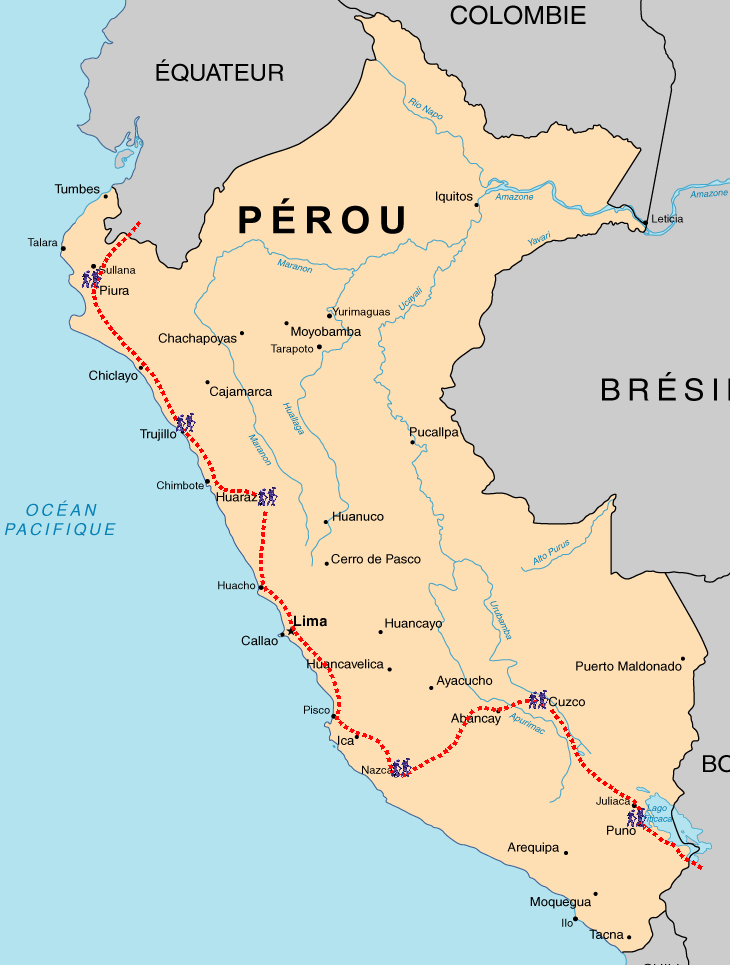PERU
The Anger of the Andes
The Diaz Alvarez family are a family of farmers living in the Salkantay Valley, more than 2,000 metres above sea level, in the tropical Andes of Peru, where tourists come from around the world to visit Machu Picchu.
Humans&Climate Change Stories met them for the first time in January 2020, in the middle of the rainy season.
SHARE THIS STORY!

Margot - Matias's niece
She grew up in the Salkantay Valley. She devotes her time to making products from the passion fruits grown by her husband, Glicerio (ice cream, juice, the local drink – pisco –, jam, etc.), and selling some of these local organic products to hikers who pass by the kiosk outside her home, on their way to Machu Picchu.

Matias:
the eldest
Margot:
Matias's niece
Grisel:
Margot's daughter
Matias - the elder
He arrived in the Salkantay Valley in 1974 and joined the peasant farmers' cooperative. For more than 40 years now he has been cultivating his land, while adapting to the effects of climate change.

Grisel- Margot's oldest child
She willingly helps her mother in the kiosk, in the orchard and in the vegetable garden, when she is not at school. Grisel is very attached to her valley. She wants to study medicine, to be able to care for the 3,000 families living there.
Peru
Population: 31,9 million (2020)
Capital: Lima (10 million)
Head of State: Martin Vizcarra
Peru is one of the countries that is most vulnerable to climate change, whereas it is responsible for just 0.4% of world greenhouse gas emissions. Its 2,400 km of coastline regularly expose it to the harsh impact of the El Niño effect. Global warming also causes climate instability in the Amazon, and in the Andean region. Peruvians living at an altitude of more than 2,000 metres, in the mountains of the Tropical Andes, must adapt their practices and their ways of life as a result of the rapid melting of the glaciers: 71% of tropical glaciers are in fact found in Peru and the area they cover has been reduced by 43% during the past 40 years.
Forecasts indicate that the rise in temperatures could cause all of the glaciers located below 5,000 meters to disappear by 2030. This lack of water resources will make it difficult to balance priorities between human needs and hydroelectric resources.
In the forests of the high Andes, the effects of climate change are manifold: the rainy periods are heavier and more concentrated, the periods of drought are longer and the extreme climate events are more numerous, with mud avalanches, landslides and floods.
The village of Santa Teresa, in the Cusco region, perched at a height of 1,800 meters above sea level, is particularly at risk. The smallholders of the Salkantay Valley, who grow coffee and passion fruits, have to guard against the risks during the rainy season, set up irrigation systems during the dry season and combat the invasion of diseases that can affect their crops. Living beside the Inca trails that are heavily used by tourists, arriving in great numbers to visit Machu Picchu, they take advantage of this tourist influx to sell their products and offer accommodation.
The capacity for adaptation of the peasant farmers living in this region - who suffer from problems further aggravated by the political instability in Peru - remains uncertain. The young people play their part in the economic activities developed by their parents. To study, however, they must move to the big towns. Only the future will tell whether they will become city dwellers or whether they will take over from their families living in the valley.
Superficy
1 285 216 km2
Density
25,02 hab/km²
Pop growth
1,7 % (2018)
HDI (2017)
0,755 (89/186)
PPP/hab
6947 USD
Inflation Rate
2,8 % (2018)
45 % of descendants of the Incas

Agriculture
10 %
37 % mixed European/
American Indians
Industry
35 %

Services
55 %
15 % of
descendants from Europe




